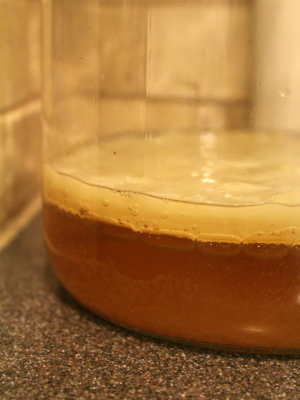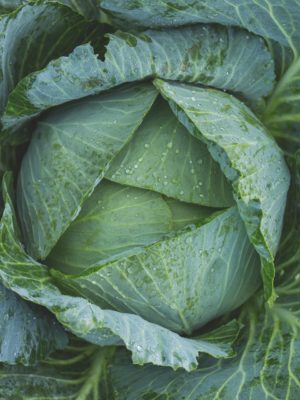
Most of you may recall the conversation you have with your OB when you are sitting in the doctor’s office and find out (or, are maybe confirming) that you are pregnant.
…”Eat lots of leafy greens, avoid eating cold deli meat, avoid drinking soda and coffee and caffeine, and get lots of rest”.
Healthy fats are essential, and take your vitamin D supplement.
If you are me, that also involves listening to them tell you that Raw Milk is a poor choice for those who are expecting, and you must consider the flu shot.
All of a sudden you are starting quite an adventure ~ what will you do?
Today I’m going to share my personal decision in deciding whether or not the Glucose Challenge Test (OGCT) is really necessary, why I decided to avoid the Glucose test, and what our alternatives were for this test – which usually happens between 24-26 weeks.
Keep in mind though that you ultimately need to make your own decision; I am not a doctor – and this is definitely not medical advice. Your decision on whether or not to take the traditional Glucose Challenge Test is up to you.
What is the Glucose Test?
The Glucose Test is administered around 26 weeks to those women who are expecting.
The whole purpose of the drink (Glucola) is to help you ingest 50 – 100 grams of Glucose. Following that ingestion, your doctor will test you to see how your body is handling the sugar.
For most normal people, when we eat carbs in our diet, they convert to glucose. Glucose circulates in our blood – as a result, our body releases insulin – that insulin pulls the glucose out of our blood and puts it in our cells (where it can be used for energy).
But when we are pregnant, that insulin response doesn’t work the same ~ it keeps more glucose in the blood (where it is transferred to the baby through the placenta). And although Glucose helps babies grow, too much can help them grow larger than normal for their {gestational} age.
Gestational Diabetes can lead to:
- Overgrown infants
- Increased C- section rates
- Low blood sugar
- Preeclampsia
- Newborn jaundice
- And more – as mentioned in this study HERE
The test itself involves the process of drinking a Glucose Drink – the ingredients in the bottle of glucose solution are NOWHERE near “real” food. They have some pretty nasty additives that include Dextrose, Natural Flavorings, Food Dyes, and more. Look at the ingredient list:
Brominated Vegetable Oil
This product is ALSO approved as a flame retardant – and banned in some countries.
Is it worrisome? Absolutely.
Brominated Vegetable Oil is often soybean derived, which is the top eight most common allergens. Not to mention that soybean oil is a GMO (Genetically Modified) Crop. BVO is found in {at least} 10% of all soft drinks in the U.S. and is intended to keep the flavoring from floating to the top of the beverage.
Brominated Vegetable Oil leaves a residue that accumulates in the body – in the brain, liver, organis and in body fat. That same BCO then transfers to the infant through the mother’s milk (nursing) – and can lead to fertility problems, neurological problems, precocious puberty & more (Src)
In 1970, the FDA removed BVO off the Generally Recognized as Safe list of food ingredients, and put it in interim status as a food additive. As a result, it’s now used in soft drinks in the US but is banned in Europe, Japan and even India.
BVO is actually patented in the US and overseas as a flame retardant (Src).
Natural Flavorings
Although these might be derived from natural sources, they are processed in a lab. Is that natural? To me it doesn’t seem like it would be.
Food Dyes
Chemical food dyes such as the ones used in this beverage, pose risks for not only the mother but the unborn child. The rainbow if risks is rather extensive – you can read about them HERE.
Dyes are complex organic chemicals that were originally derived from coal tar, but now from petroleum. Companies like using them because they are cheaper, more stable, and brighter than most natural colorings. (Src)
These types of drinks (referred to as Glucola) are basically sugar water – they have artificial colors & preservatives to help them keep a VERY long shelf life. They are not something you should consume while pregnant, and the ingredients they contain are certain something to take into consideration.
It IS important to monitor your blood glucose during your pregnancy, but it’s also important to know that you have alternatives to this test. You do NOT have to take the Glucola drink.
Obviously your doctor may disagree, but it’s ultimately YOUR pregnancy and you can make that decision for yourself.
Are there Alternatives?
Thankfully there ARE alternatives to the Gestational Diabetes test. Though your doctor probably won’t offer you the alternatives unless you ask – and even then she/he might even hesitate. In the end, it’s your choice.
Hemoglobin A1C Test: Those women who are still early in their 1st or 2nd trimester can use the Hemoglobin A1C test (blood test).
Jelly Bean Test: This test has you eat a specific number of jelly beans, which provide 50 grams of sugar. There are organic, and Non-GMO Jelly Beans that are naturally colored that you can choose from. The number of jelly beans you have to eat varies by actual brand/type … and can be as many as 50-60. You are required to eat those within a 5 minutes period.
Random Glucose Testing: This is an option that is more lengthy – you will finger prick your blood for testing on a regular basis for a period of time. Combine with an excellent diet this is just another option.
I would never tell anyone that the Glucose Test is NOT important — because Gestational Diabetes IS a HUGE deal. But it’s ALSO just as important to know what you are ingesting, and now that as a patient, you you have authority to tell your doctor “no” on certain tests you do not feel comfortable with. There ARE alternatives – and they are just as effective (without the toxic ingestion of this nasty drink!)







[…] Romper, Food Network, Birthing Balance, Aviva Romm, Scientific American, Green Child Magazine, Rebooted Mama, Miracle Cord, Sarah Bridgeman, Essentially Erin, The Bump, Novant Health, Mount Sinai, Mercedes […]